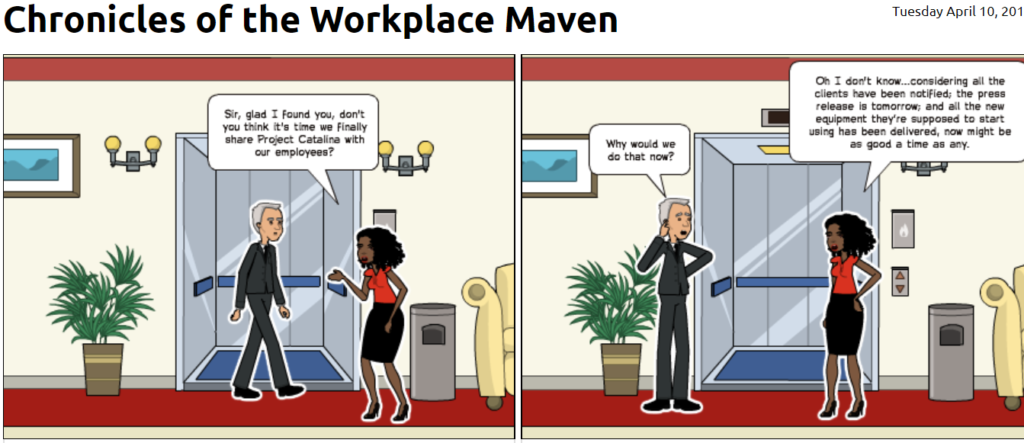Regardless of the size or type of an anticipated initiative, the way you first communicate with your employees will make or break whether you will obtain the buy-in from them that you will need to make the initiative successful. Employee communication should be appropriately planned for in the early stages of any project planning. Here are 4 necessary components to consider when seeking employee buy-in for you next initiative.
1. Lay out the Vision
One of the critical responsibilities of leadership is to clearly layout the vision for any initiative. This means breaking down for employees the what, when, how and most importantly, the why.
First, explain exactly what the initiative is. Prepare to speak to the essence of the project as clearly and concisely as possible. Communicate for understanding without being vague, ambiguous or wordy, or the message will be lost. Second, outline when the initiative is taking place. In sharing a roadmap and timeline for when the different stages of the initiative will occur you allow employees to prepare and adjust themselves accordingly. Third, highlight how the initiative will impact employees’ day to day responsibilities or overall roles within the organization. By connecting what you share about the initiative to how it will affect them personally and what will be expected of them you will be addressing what is really on everyone’s mind. Lastly, make sure the why is covered – describe in detail the purpose of the initiative. Employees should walk away understanding what key goals and objectives the initiative is designed to meet. They should be able to connect the initiative with solving an existing business problem or improving upon the business.
2. Tailor your Communication
The most successful communication plan should be tailored to your organization’s specific workforce. When developing the framework and determining the vehicle of your employee communications, take the time to understand your audience. Leaders are responsible for interpreting the conversation of the same initiative into distinct messages so that employees at different levels and areas will still be able to respond to it. By being purposeful in how you introduce the information that you are presenting and specific as to from what perspective you are speaking, you will proactively address the individual concerns that will inevitably arise. Remember, your range of stakeholders will feel the impact of the initiative in different ways, especially when they are processing how it will ultimately impact them personally. It’s important for employees to feel a connection to an initiative, so in tailoring your communication you are helping them make that connection.
3. Plan the Timing of your Communication
When it comes to communicating new initiatives to your employees, timing is a critical component to gaining buy-in. The biggest mistake an organization can make when it comes to communicating new initiatives is not taking the time to coordinate the timing of when to bring employees into the conversation. If you wait until all the decisions have been made, you will have missed your best opportunity to connect people to the initiative. You want to be able to share information with employees as early in the initiative as possible to allow them the ability to feel as an active participant in the initiative rather than feel as though they’re an afterthought. By doing so you create the excitement and commitment that you need. Plan your timing effectively, and watch your initiative succeed.
4. Allow for Input Along the Way
True buy-in involves at least some element of employees feeling as though they have a vested interest in the outcome. This means framing your communication about the initiative more like a conversation that encompasses a two-way dialogue rather than a speech informing employees as to what will occur. By allowing for employee opinions and feedback to be heard there will be a strong likelihood that you will gain valuable insight that perhaps wasn’t previously available during the initial planning stages. After all, your employees are the ones on the front lines doing the work and interfacing with your customers, so it is highly possible that an initiative crafted in the Boardroom can be improved upon by those who will be undertaking the task of bringing the initiative to life. Nonetheless, even if engaging in the exercise of asking for employee opinion doesn’t result in any change in the initial initiative, the mere effort of soliciting the feedback is significantly better than never giving employees an opportunity to have any input at all. It’s all about having employees feel as though their feedback and ideas are being acknowledged when voiced and that there was a real opportunity to have an impact on the initiative.
No matter how effective an initiative seems on paper, your employees are the ones that are going to be putting it into action. Develop a thoughtful communication plan geared at obtaining employee acceptance. If employees are not connected to your vision — or worse, are actively begrudged by it — the very thing you spent so long conceptualizing will inevitably be a failure.

